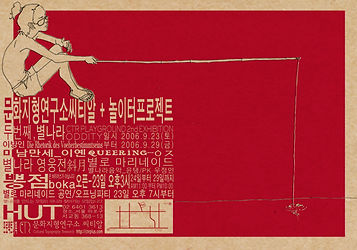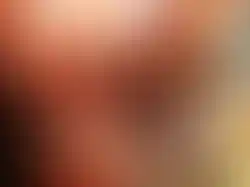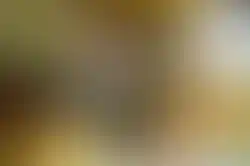
CTR is a cultural village that moving for diverse enjoy.
Culture is the spiritual value that only mankind can produce and consume, and it is the essence of infinite possibilities that are maintained and developed through various learning. Also, only culture will be the true value that proves the fundamental development and survival of mankind. The civilization achieved by the accumulation of knowledge cannot be a measure of human value and development. We need wisdom on how to use it and the intelligence to lead it, and this complex phenomenon of wisdom and intelligence can be called culture. In other words, we need a culture that meets or overpowers civilization rather than mankind that is made up of only civilization and mankind that has only developed civilization.
For this reason, CTR freely reinterprets various cultures of the past and present, transcending times and borders, and recreates a new culture based on this. And the process also attempts a diverse and free-spirited approach beyond the existing framework. CTR produces and distributes various projects freely. CTRForm Architecture Studio proposes various structures from human scale to urban scale through research on economic, social, and cultural forms as well as shapes and spaces. CTRSound pursues music with an independent spirit that has stepped back from competition and economic logic. In addition, Onepiece Magazine, Playground project, and Earthrun project were conducted. All CTR projects are published after being organized in CTRPrint. In addition, CTR operates the cultural space Jebidabang for natural exchanges and experiments with creators in various fields, and CTRCabinet for various exhibitions and events. All cultural contents of CTR are always created on the premise of enjoyment and extraordinary interest.

EarthRunFestival


The'EarthRunFestival', where you can feel how enjoyable it is to go around without purpose, started in 2007 at Nanji Hangang Park in Seoul, and since 2017, it has held a magical feast for one day on Sangsu street every year. The Roaming Festival is a'half step' back from competition and economic logic. As you can see from the name of the festival, it was designed with the intent to play comfortably, relax, enjoy, and feel the atmosphere of the neighborhood for just one day in busy daily life. Watching performances that start quietly all over the streets, participating in programs like street yoga and lounging, wandering around the neighborhood without a purpose, and looking completely at every nook and cranny of the neighborhood you've never found.
Program
+ EarthRun Running is a game who's who compete go slowly. If you look around and take a slow pace, you are the finish line.
+ EarthRun Golf is an urban golf that uses the terrain throughout the streets. Follow the rolling balls to greet the store clerk and a cat.
+ EarthRun Street Golf Focus! yoga. Ignore the envious gaze of people passing by.
+ EarthRun Strret Gigs Think of a live gigs in front of a convenience store. At the beauty salon we went to yesterday, at a regular bar table, someone is singing today
EarthRun Project




The EarthRun Project is a tour program that shares the joy of wandering.
People who don't want to go to art galleries or events large and small gather together and set out for the day's destination. However, the purpose of the EarthRun project is to roam. You can arrive at the exhibition hall, stop at another place in the middle, or change directions. It is not a boring tour where you reach your destination in the fastest way, achieve a predetermined goal, and break up.
The EarthRun Project enjoys going.
Exhibition and activity
걱정교환소 A.X
2014년 1월

The inside and outside are divided by the act of'wearing on', and the created space is contrasted with a private space where I can be seen purely and a public space where rationality hides me, like a girl in a beautiful dress. The contradictory image reminds me of the word home through the borders that illuminate the space where I and I are and the outside objects that are peeked beyond it.
wear-house ware-house where-house
2014년 1월

The inside and outside are divided by the act of'wearing on', and the created space is contrasted with a private space where I can be seen purely and a public space where rationality hides me, like a girl in a beautiful dress. The contradictory image reminds me of the word home through the borders that illuminate the space where I and I are and the outside objects that are peeked beyond it.
걱정교환소 A.X
2012년 9월

'Worry' means'what I always wanted to abandon'. And what I want to throw away is so-called'garbage'. This is in line with the past of Nanjido. Collect trash on the trash island and make a kind of giant trash can.
In other words, from the idea that I want to throw away my ‘worry’ as trash, I tried to make this container a ‘place where people throw away worries.’
Playground Project


The Playground Project is a project in which writers from various fields gather under one theme for 6 months to interact with each other, and each create their own work.
The focus of the playground project is the diversity of approaching a single topic from multiple perspectives, the linkage that each work is grouped into a single topic, and the disclosure of the progress of ideas and changes in work at a glance. In particular, the Playground Project considers the completion of the work, not the progress of work for the outcome, but the process of progress.
As the name suggests, the playground project aims to be an open project where artists can have fun. Rather than the creative pressure or serious discussion to create something new, we share the process of birth and growth of ideas, and focus on the play that sometimes breaks and sometimes changes and renews. In other words, it's a project where you can play happily together under one theme without a clear outcome or purpose.
The things that we think about and make together in the playground project are not just how brilliant ideas we have, but how brightly we explain everyday ideas and thoughts, and how we approach them.
While the playground project is in progress, the work and worries that the participating artists bring are not refined or completed, but things that continue to collide and grow through meetings. And in this process, another communication begins.

Playground Project
1st, Playground
September 2005
'Playground', which was the first theme of the playground project, started without setting a specific direction or purpose under one unified theme, 'playground'.
Artists from various fields gathered under the theme of playgrounds, each engaged in various personal works and contemplated 'play' and 'ground' through mutual exchange.

Playground Project
2nd, the star country
April, 2006
Participating artists bring in their own thoughts for each workshop from a 別別Byul(division) country in a blank paper state. It can be an image or a text, regardless of whether it is structural or fluffy.
During the project, the artists share their work and create a 'Byul country'..

Playground Project
3rd, I HATE YOU
October, 2006
The third playground project, I HATE YOU, observes the world where people and people live together. Participating artists consider and research what they hate (YOU), who they hate it (I), and why they don't like it (HATE) through regular meetings. And based on this, each person will complete their work on'I HATE YOU'.
The completed work, whatever its form, comes from interest, not apathy.

Playground Project
4th, Space Ark
October, 2007
The fourth theme of the playground project is the space ark.
Under the setting that the earth will be destroyed after 6 months, we are concerned about 'what will be left?' for the descendants of humanity who have not yet been born. Each of the six artists expresses what they want to leave as a work, and places the work by setting the exhibition space as a single spaceship.
The contents of the project are organized and published in a report format.
Lemon Salon
2005-2012
Lemon Salon is an offline space operated by CTR.
This is a playground that can be transformed into various forms according to the needs of visitors.
Lemon salon was created with nostalgia for the salon culture that blossomed in France in the 17th and 18th centuries.
From 2005 to 2012, various incidents and accidents continued here, from big projects such as the “Playground Project” and “One Piece Magazine” to small concerts, experimental exhibitions, and fun drinking parties.
The relationships and experiences we met at Lemon Salon naturally lead to Jebidabang in 2012.




















































































